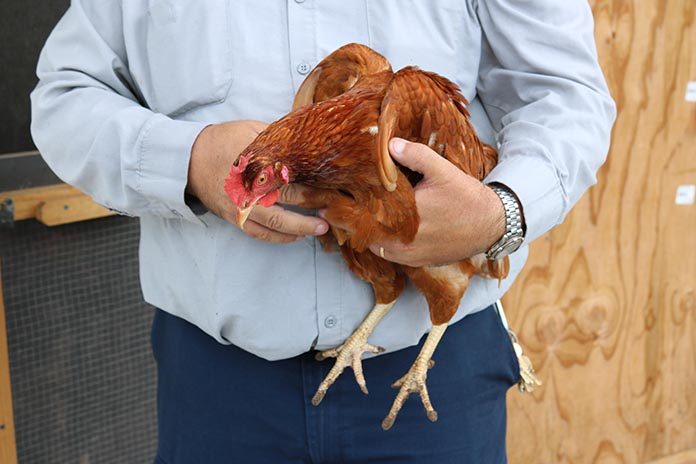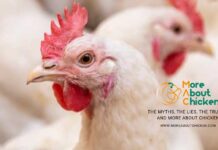
The term big data may at first appear incongruous to animal agriculture. However, by capturing, analysing, reporting and sharing of through-production chain data with decision makers, organizations are better equipped to make informed decisions. Pivotal to this process is the type of data, its relevance, accuracy, and integrity
The importance of capturing relevant, accurate data that is reported in a meaningful time and space cannot be underestimated. However, significant challenges exist with big data for poultry production, not least with the very basics of capturing data, storage, security, analysing as well as effecting meaningful change based on the data. This paper will review current technologies available or in development for the
On farm data
a) Environment
With the advent of tunnel ventilation for poultry housing over three decades ago, the ability to control and monitor environmental conditions such as temperature, relative humidity, ventilation, lighting, air quality and heat index/bird comfort has advanced significantly. Since these technologies currently exist and are widely used, the focus of this review will concentrate on emerging technologies and identify opportunities for development. However, it is worthwhile noting that, although regulation and monitoring of environmental conditions has increasingly become more automated, the reporting and dissemination of these records beyond the farm is often fragmented and remains an area for improvement.
b) Water
Water meters are more common on farms than feed measuring devices; however, not every farm or shed has these. It is perhaps stating the obvious that water consumption is a crucial indicator as to the health of birds and, by extrapolation, may give some indication of feed intake. Yet water data is often over looked on farm or not recorded and reported in a manner so that it best supports the optimal management of flocks. Recording hourly, if not daily water intake data would assist in identifying trends in consumption, particularly decreased intake which may precede a health problem and provide an opportunity for early investigation and intervention.
c) Feed
When it comes to poultry production, key drivers of efficiency and profitably are centered around feed. While feed is but one of the many components of poultry production, its contribution to production efficiency warrants particularly close attention. Feed costs reportedly account for 60-70% of production costs and, therefore, its importance to the economics of a poultry company cannot be over-emphasized.
However, somewhat paradoxically, this metric is perhaps the least well reported. The volume of feed consumed for each batch or production cycle is approximated on-farm using varying combinations of feed mill weigh bridge receipts and subjective estimates which range from somewhat technologically advanced to throwing rocks at silos. Of the more technologically advanced methods for feed usage estimation, some are prone to error and require considerably more maintenance than others. Whichever method is used, although it might be considered a step forward in monitoring feed, the accuracy of the data may be questionable and therefore potentially misleading. The need (and desire) to accurately measure and report feed intake in real-time is significant and the benefits of these data should not be underestimated.
Another factor which contributes to the imprecision of feed reporting is that, despite best intentions, more often than not feed usage is reported after the batch has finished and with incomplete data. The accuracy of this also relies on the estimate of feed left in the silo at the end of the batch. Given the above methods that are routinely used to estimate silo inventory, application of more accurate feed volume monitoring is key to providing meaningful data daily and even hourly, and in real time. Emphasizing the potential of this data stream to improve poultry production decision making results in the ability to benchmark flocks, sheds, farms and changes in management/nutrition. Currently unless research farms are available, the ability to accurately quantify effects on performance/efficiency of birds in response to changes in feed formulation, feed additives and feed manufacture is limited. The potential to monitor feed delivery into sheds, and therefore calculate daily feed consumption, is perhaps one of the most significant challenges on-farm, yet the opportunities here are enormous.
d) Live body weight and uniformity
Live body weights and flock uniformity are important to assess growth, feed efficiency and underlying health or welfare issues. Currently, the average body weight and uniformity of birds is obtained by manual weighing of a subset of the flock or, less commonly, automatic weighing platforms. Manual weighing of birds is laborious and limits the number of birds sampled, potentially misrepresenting the flock. Automatic weigh platforms are subject to the vagaries of bird behaviour and body weight. Heavier birds are less likely to step onto the weigh platforms leading to an underestimation of flock body weight by as much as 30%. Concordantly, this scenario is most evident towards the end of the production cycle in broilers when broiler body weights are crucial to scheduling pick up times. Image analysis techniques that estimate bird body weight based on the surface area of the bird in conjunction with weigh platforms are in development with results showing improved accuracy (less than 5% error) when compared to manual weighing.
e) Biosensors
An emerging area in livestock farming is the use of advanced biosensor technologies such as microfluidics, sound analyzers and image detection algorithms. Sound analyzers have been reported to be effective at predicting ‘stress’ levels in laying hens thermal comfort of chicks during the brooding stage, growth performance of broilers and chicks pre-hatch. The monitoring of the spatial distribution of birds may provide indicators of bird behaviour, environmental conditions and bird activity. It is envisaged that these sensors will be incorporated into poultry production units and feed data (information) to poultry livestock managers to enable appropriate decision-making relating to the management of the birds. Currently, the adoption of these technologies is low; however, these technologies represent the direction for which poultry production is heading and will further contribute to filling the data lake.
Limitations and barriers to adoption
Digital technology is a key enabler across the food chain; however, despite clear trends in other countries, Australia lags significantly in using digital information and software platforms. Impediments to the adoption of digital technology are multifactorial but can largely be attributed to the capital constraints required to implement such systems and inadequate telecommunications coverage, especially on farms located in remote areas. Efforts to improve connectivity to the internet in remote areas are making progress, yet internet access still remains inconsistent, unreliable and slow in many areas. Work around solutions to this are expensive and, given the fragmented location and ownership of farms, it is unlikely a single poultry farm could justify the capital required.
Another consideration in adopting digital monitoring and reporting technologies is that of data ownership and security. In fully integrated companies where farms are owned or managed by the company, the issues around data ownership and transparent reporting are perhaps less controversial than in situations where contract growers are engaged. Similarly, larger organizations are more likely to have dedicated IT departments and security protocols in place than smaller operators. In situations where contract growers are employed, sensitivities pertaining data sharing and security may occur with concerns raised as to how the data will be stored, shared and interpreted by poultry companies. The latter may impact contract negotiations or payments and would need clarification at the onset of a data project. Whichever the case, the information generated would benefit both parties provided clear undertakings as to how the data will be used were provided.
Conclusions
The adoption of technology for monitoring and management should be based on some fundamentals, otherwise there is the risk of being overwhelmed with erroneous or meaningless data. A caveat to the use of big data for poultry production is that the combination of people and data is critical to success. Skilled people will be required to interpret the data as well as managing flocks in the field; big data is not a replacement for skilled people rather a tool to enable decision making. To maximise the value of big data in poultry production, a whole value-chain approach will need to be employed and will also require adjustments in how data are currently shared. An overarching objective of using big data in poultry production should be to provide the right data to the right person at the right time. Achieving meaningful data sets and analysis thereof will facilitate increased data driven decisions and improve production efficiency.
References are available on request
From the Proceedings of the 2019 Australian Poultry Science Symposium

















